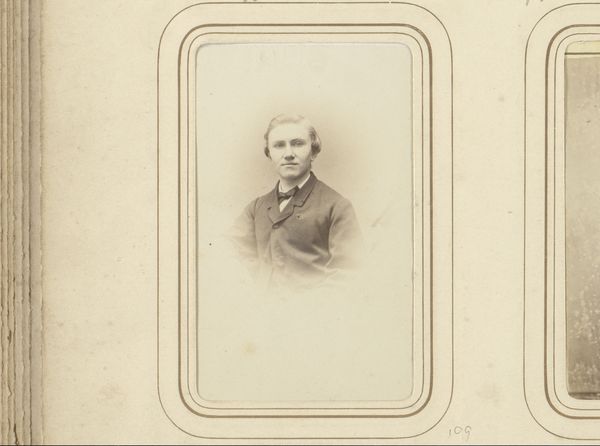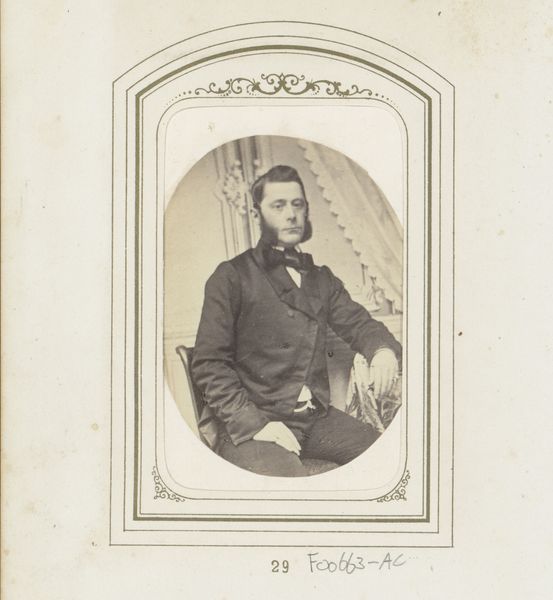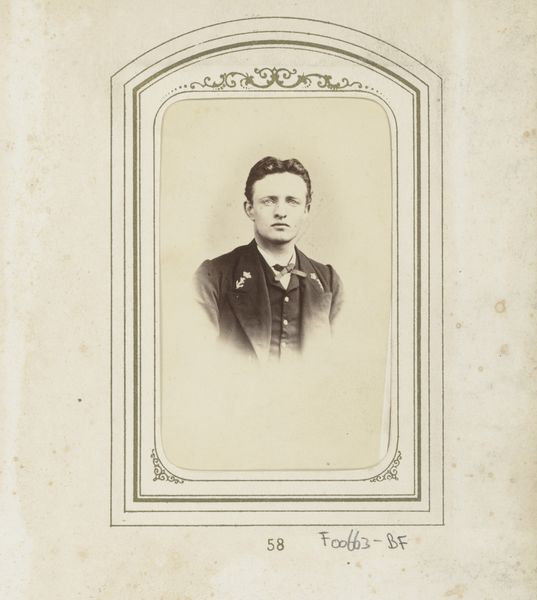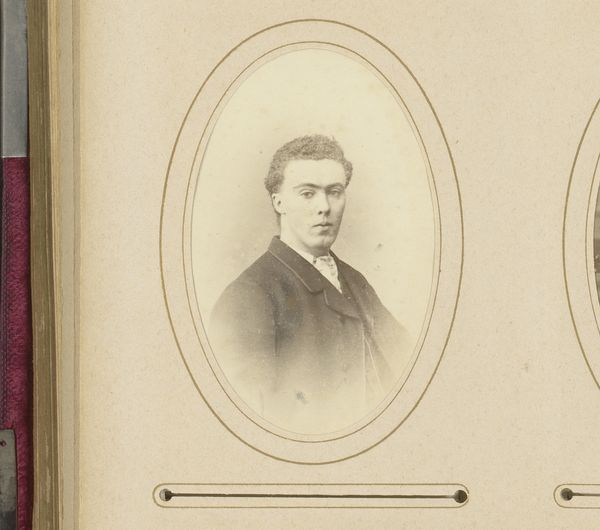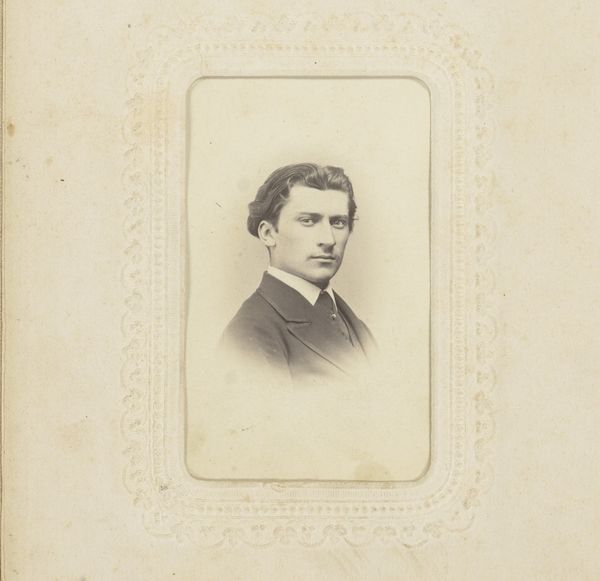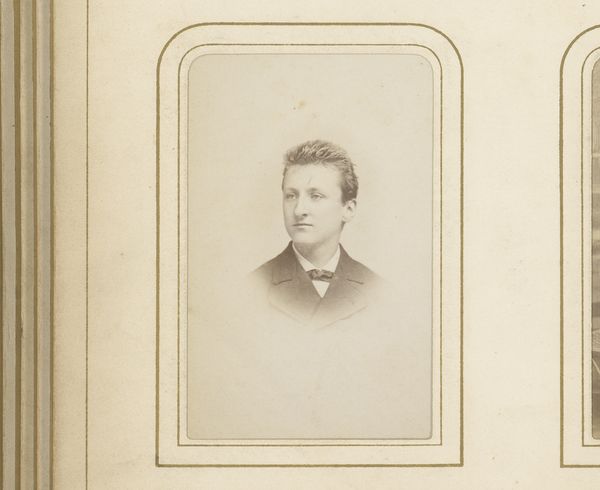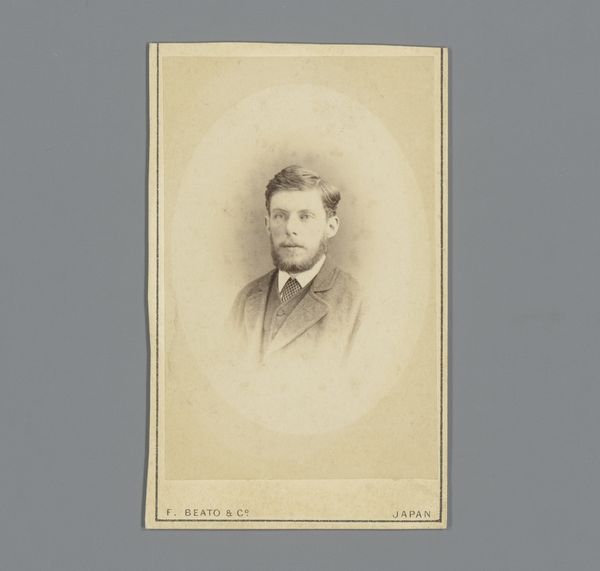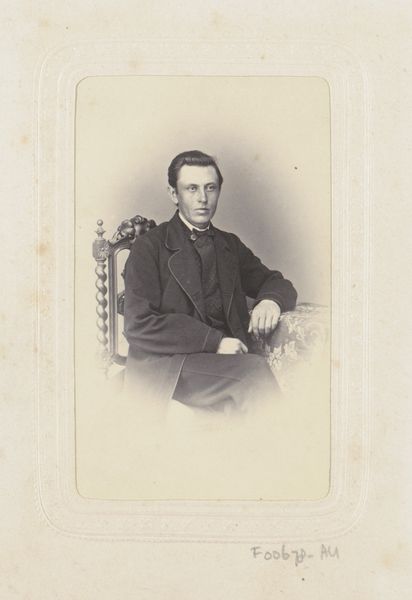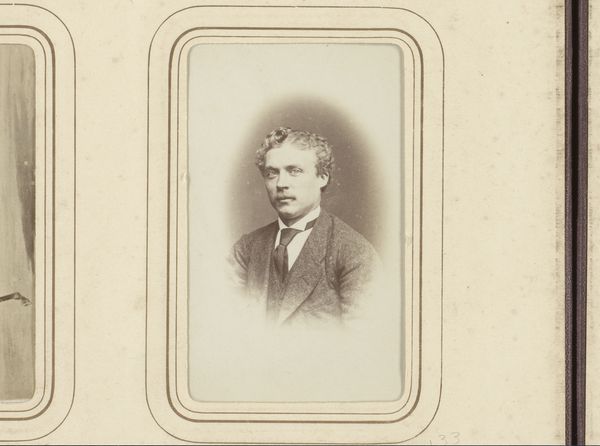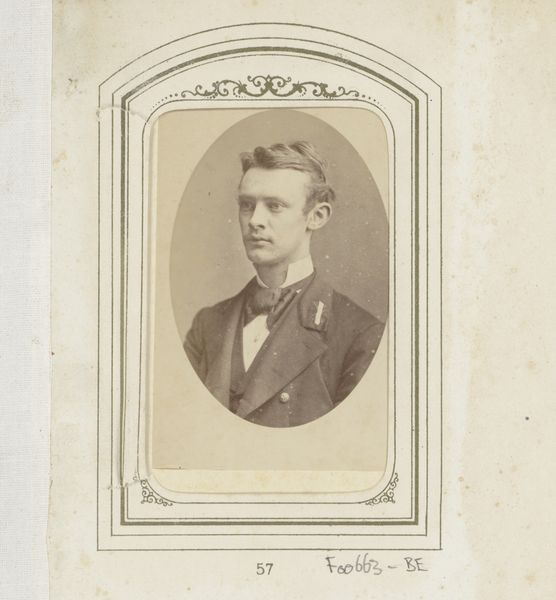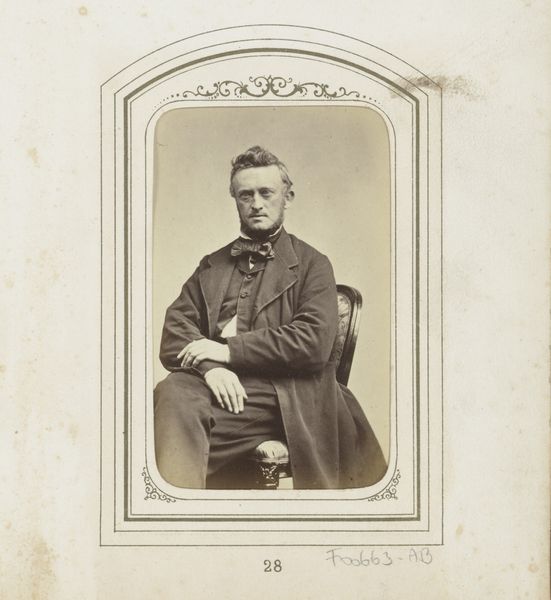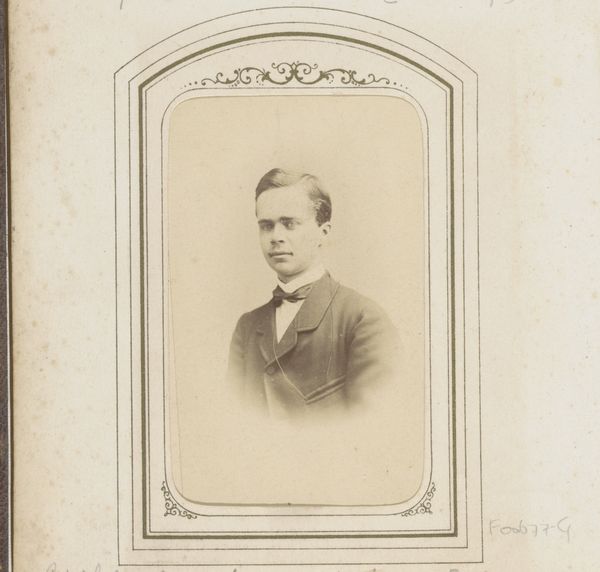
photography, gelatin-silver-print
#
portrait
#
photography
#
historical photography
#
yellow element
#
gelatin-silver-print
#
19th century
Dimensions: height 85 mm, width 53 mm
Copyright: Rijks Museum: Open Domain
Curator: Let's examine this gelatin-silver print by Wegner & Mottu, titled "Portret van een man," dating roughly between 1857 and 1864. Editor: Its formality immediately strikes me. The oval vignette focuses attention directly on the subject's countenance, imbuing the image with a composed, almost stoic mood. Curator: Indeed, the photograph's composition directs our gaze towards the sitter's face, with the subtle tonality variations and diffused lighting emphasizing his features. We can examine how the contrast between light and shadow shapes his face, creating volume and depth within a shallow space. Editor: Beyond composition, I’m curious about the material conditions surrounding such photographic prints. Consider the laborious process of producing each print, and its relation to accessibility. This would be far more available for affluent members of society, shaping the means of representation and visibility. Curator: Precisely, understanding the economic and technological aspects of photography informs how images from that era acted to shape and represent identity. The very choice of gelatin-silver—relatively new at the time—hints at the evolution of photographic technology and its social implications. Editor: The small details really stand out in the portrait itself: his carefully knotted tie, the plush velvet collar—these were crafted with intention and precision. Photography changed both labor conditions and material consumption habits within art. It is an area rarely studied. Curator: And what we can abstract is how its rigid symmetry and tonal constraints mirror the Victorian emphasis on propriety, shaping how even personal likenesses were conceived. Even photography as a discipline comes from a particular point of material access, that this man seems to possess. Editor: Studying this intersection gives clues about Victorian society at the height of industrial output, as well as the portrait’s aesthetic properties that determine form and how viewers interact with it. Curator: Absolutely. This close examination reveals both the structure and implications ingrained in an art object from the 19th Century. Editor: From material production to its presence in our social context, that it now occupies as artifact to be studied and engaged with—enduring questions and starting points indeed.
Comments
No comments
Be the first to comment and join the conversation on the ultimate creative platform.
